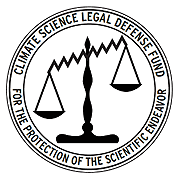Blog Archive
Sunday, January 14, 2024
Sunday, July 9, 2023
Unofficial Temperature Records on July 9, 2023
This was copied from http://coolwx.com/record/ which is published by a noted climate change denier. Apparently, he does not believe his own data.
LEGEND OF UNOFFICIAL RECORDS:
| . | Tied/Broken | Tied/Broken | ||||
| HIGH RECORD | ||||||
| LOW RECORD |
Table Units: [ Fahrenheit | Celsius ]
| City | Country | Temp & Trend (°F) | Monthly / Alltime Record (°F) | Unofficial Daily Record (°F) | Length (years) | ||
| Braunschweig | Germany | (1984) (2022) (1992) | |||||
| Stuttgart-Echterdingen | Germany | (2010) (2019) (1941) | |||||
| Zurich-Kloten | Switzerland | (1959) (1983) (2003) | |||||
| Luxeuil | France | (1984) (1983) (1983) | |||||
| Monte Calamita | Italy | (2015) (2020) (2017) | |||||
| Schwaebisch Hall | Germany | (1984) (2019) (2015) | |||||
| Friedrichshafen | Germany | (2010) (2007) (2003) | |||||
| Munchen | Germany | (2002) (1983) (2003) | |||||
| Dresden-Klotzsche | Germany | (2010) (2022) (2022) | |||||
| Dijon | France | (2020) (2019) (2019) | |||||
| Hof | Germany | (2010) (2022) (2003) | |||||
| Baden Wurttemberg, Neuostheim | Germany | (2010) (2019) (2019) | |||||
| Le Puy | France | (2020) (2015) (2015) | |||||
| Tozeur | Tunisia | (2008) (2018) (1979) | |||||
| Dobbiaco | Italy | (2010) (1983) (2021) | |||||
| Ansbach / Katterbach | Germany | (2010) (1983) (1994) | |||||
| Illesheim | Germany | (2010) (2015) (2003) | |||||
| Capo Mele | Italy | (2013) (2022) (2015) | |||||
| Piacenza | Italy | (2012) (1983) (2003) | |||||
| Ingolstadt | Germany | (2010) (1983) (1983) | |||||
| Sion | Switzerland | (2010) (2019) (2019) | |||||
| Karlovy Vary | Czech Republic | (2010) (2007) (2012) | |||||
| Luebeck-Blankensee | Germany | (2010) (2022) (1992) | |||||
| Nuernberg | Germany | (2010) (1983) (1983) | |||||
| Frankfurt / M-Flughafen | Germany | (1959) (2019) (2019) | |||||
| Plzen Line | Czech Republic | (1995) (1983) (1983) | |||||
| Geneve-Cointrin | Switzerland | (1984) (2015) (2015) | |||||
| Chambery / Aix-Les-Bains | France | (2010) (2015) (2003) | |||||
| Altenstadt | Germany | (2010) (1984) (1984) | |||||
| Tulln | Austria | (2011) (2019) (2013) | |||||
| Bueckeburg | Germany | (2010) (2022) (2003) | |||||
| Grazzanise | Italy | (2012) (2015) (2015) | |||||
| Remada | Tunisia | (2008) (1981) (1981) | |||||
| Sable Island, N. S. | Canada | (2013) (1994) (2016) | |||||
| Brno / Turany | Czech Republic | (1991) (2013) (2013) | |||||
| Wiesbaden | Germany | (1959) (2019) (2019) | |||||
| Diourbel | Senegal | (1991) (1995) (1987) | |||||
| Neuburg / Donau | Germany | (2010) (1983) (1983) | |||||
| Haugesund / Karmoy | Norway | (2014) (2019) (2019) | |||||
| Erfurt-Bindersleben | Germany | (1959) (2022) (2022) | |||||
| Ilheus Aeroporto | Brazil | (1990) (1992) (1995) | |||||
| Salzburg-Flughafen | Austria | (2002) (1983) (1983) | |||||
| Pratica Di Mare | Italy | (2011) (2005) (2007) | |||||
| Bolzano | Italy | (2016) (2022) (1987) | |||||
| Albenga | Italy | (2015) (1985) (1985) | |||||
| Milano / Malpensa | Italy | (1983) (2022) (1981) | |||||
| Bale-Mulhouse | France | (1984) (1983) (2003) | |||||
| Grenoble / St. Geoirs | France | (2020) (1983) (2003) | |||||
| Kolda | Senegal | (1998) (2012) (1999) | |||||
| Lechfeld | Germany | (2010) (1983) (1983) | |||||
| Niederstetten | Germany | (2002) (2022) (2003) | |||||
| Fritzlar | Germany | (2010) (2022) (2022) | |||||
| Lahr, CAN-AFB | Germany | (2010) (2019) (2003) | |||||
| Memmingen Allgau | Germany | (2010) (1984) (1984) | |||||
| Hannover | Germany | (2010) (2022) (2022) | |||||
| Laghouat | Algeria | (2021) (1981) (1981) | |||||
| Napoli / Capodichino | Italy | (2002) (1987) (1981) | |||||
| Pian Rosa | Italy | (1968) (1988) (1988) | |||||
| Nancy / Ochey | France | (2010) (2019) (2019) | |||||
| Nancy / Essey | France | (1982) (2019) (2019) | |||||
| Lungi | Sierra Leone | (1989) (1973) (1973) | |||||
| Hohenfels | Germany | (1995) (1983) (1983) | |||||
| Praha / Ruzyne | Czech Republic | (1959) (1983) (2012) | |||||
| Laupheim | Germany | (2010) (1983) (2003) | |||||
| Touggourt | Algeria | (2012) (2018) (2018) | |||||
| Bergamo / Orio Al Serio | Italy | (1995) (1983) (1979) | |||||
| Ouarzazate | Morocco | (2018) (2017) (2006) | |||||
| Ramstein | Germany | (1984) (2019) (2015) | |||||
| Yarmouth, N. S. | Canada | (2010) (2013) (1993) | |||||
| Torino / Caselle | Italy | (2016) (2022) (1984) | |||||
| Celle | Germany | (2010) (2022) (2022) | |||||
| Fernando De Noronha | Brazil | (1996) (1973) (1989) | |||||
| Verona / Villafranca | Italy | (2012) (2013) (2003) | |||||
| Clermont-Ferrand | France | (1982) (1983) (2019) | |||||
| Uralsk | Kazakhstan | (1984) (1984) (2021) | |||||
| Linz / Hoersching-Flughafen | Austria | (2002) (1983) (1983) | |||||
| Tumbes | Peru | (1997) (1991) (2020) | |||||
| Orange | France | (1982) (1983) (2003) | |||||
| Marathon, FL | United States | (2009) (2005) (2020) | |||||
| Conakry / Gbessia | Guinea | (2002) (1977) (1977) | |||||
| El Bayadh | Algeria | (2012) (1997) (1997) | |||||
| Aktjubinsk | Kazakhstan | (2011) (1984) (1975) | |||||
| Saint-Yan | France | (2010) (2019) (2019) | |||||
| Lyon / Satolas | France | (2020) (1983) (2003) | |||||
| Kelibia | Tunisia | (2012) (2017) (1987) | |||||
| Firenze / Peretola | Italy | (2017) (1983) (2012) | |||||
| Milano / Linate | Italy | (1968) (1975) (2003) | |||||
| Ufa | Russia | (2020) (1952) (1952) | |||||
| Petrolina | Brazil | (2013) (1995) (1991) | |||||
| Locarno | Switzerland | (2016) (1985) (1985) | |||||
| Passo Rolle | Italy | (2010) (1987) (1983) | |||||
| Roma / Urbe | Italy | (2019) (2001) (2002) | |||||
| Pisa / S. Giusto | Italy | (2003) (2005) (2005) | |||||
| Roma / Ciampino | Italy | (2019) (1983) (1981) | |||||
| Kedougou | Senegal | (2011) (1999) (2015) | |||||
| Banjul / Yundum | Gambia, The | (2016) (1980) (1980) | |||||
| Kayes | Mali | (2002) (2012) (2010) | |||||
| Makokou | Gabon | (1995) (1977) (1992) | |||||
| Wunstorf | Germany | (2010) (2022) (2022) | |||||
| Nordholz | Germany | (2010) (2022) (1992) | |||||
| Fassberg | Germany | (2010) (2022) (2022) | |||||
| Wroclaw Ii | Poland | (2002) (2022) (2015) | |||||
| Gabes | Tunisia | (1980) (2021) (2020) | |||||
| Chelyabinsk-Balandino | Russia | (2020) (2012) (1934) | |||||
| Lugano | Switzerland | (2016) (1983) (1983) | |||||
| Strasbourg | France | (1982) (2019) (2015) | |||||
| Hierro / Aeropuerto | Spain | (2022) (1992) (2012) | |||||
| Augsburg | Germany | (2010) (1983) (1983) | |||||
| Roosevelt Roads, PR | United States | (2020) (2003) (2015) | |||||
| Point Salines Airport | Grenada | (2020) (2002) (1998) | |||||
| Gustavia, Saint Barthelemy | Guadeloupe | (1987) (1995) (1981) | |||||
| Lampedusa | Italy | (2019) (1984) (2021) | |||||
| Rodez | France | (2010) (2006) (2019) | |||||
| Granada / Aeropuerto | Spain | (2015) (2017) (2021) | |||||
| Bissau Aeroport | Guinea-Bissau | (2013) (1985) (1976) | |||||
| Innsbruck-Flughafen | Austria | (2010) (2015) (2019) | |||||
| Paganella | Italy | (2010) (1973) (1973) | |||||
| Venezia / Tessera | Italy | (2012) (1983) (1991) | |||||
| Aurillac | France | (1983) (1983) (2019) | |||||
| Saint-Louis | Senegal | (1989) (1982) (2017) | |||||
| Flores Acores | Portugal | (2006) (1979) (1980) | |||||
| Ostrava / Mosnov | Czech Republic | (1995) (1994) (2013) | |||||
| Le Luc | France | (2012) (1982) (1982) | |||||
| Chlef | Algeria | (1984) (2015) (2021) | |||||
| Tindouf | Algeria | (2011) (2016) (2004) | |||||
| Flamingo Airport, Bonaire | Netherlands Antilles | (2005) (1992) (2008) | |||||
| Le Lamentin | Martinique | (2010) (1975) (1988) | |||||
| Udine / Rivolto | Italy | (1983) (1983) (1983) | |||||
| Torino / Bric Della Croce | Italy | (2020) (2022) (2019) | |||||
| Nevers | France | (2010) (2019) (2021) | |||||
| Nice | France | (2019) (1988) (1988) | |||||
| Cannes | France | (2007) (2019) (2017) | |||||
| Jerez De La Fronteraaeropuerto | Spain | (2016) (1995) (1995) | |||||
| Songea | Tanzania | (2019) (1976) (1975) | |||||
| Grantley Adams | Barbados | (1993) (1978) (1979) | |||||
| Owen Roberts Airport Grand Cayman | Cayman Islands | (2004) (2012) (1995) | |||||
| Wien / Schwechat-Flughafen | Austria | (2011) (2012) (2012) | |||||
| Viterbo | Italy | (2012) (2005) (2022) | |||||
| Bologna / Borgo Panigale | Italy | (2017) (1983) (1998) | |||||
| Hato Airport, Curacao | Netherlands Antilles | (1995) (1992) (1975) | |||||
| Rasht | Iran | (2011) (1980) (1980) | |||||
| Treviso / S. Angelo | Italy | (2012) (1989) (1989) | |||||
| . | |||||||
| Middleton Island, AK | United States | (1952) (1955) (1980) | |||||
| Clinton, OK | United States | (2015) (2005) (2021) | |||||
| Concord, CA | United States | (1999) (1999) (1990) | |||||
| Kindakun Rocks, B. C. | Canada | (2009) (1988) (2002) | |||||
| Kekaha, HI | United States | (1973) (1974) (1979) | |||||
| San Carlos Airport, CA | United States | (1986) (1986) (1990) | |||||
| Palo Alto Airport, CA | United States | (2000) (1986) (1990) | |||||
| Port Harcourt | Nigeria | (2021) (2008) (2008) | |||||
| City | Country | Temp & Trend (°F) | Monthly / Alltime Record (°F) | Unofficial Daily Record (°F) | Length (years) | ||
Subscribe to:
Posts (Atom)






